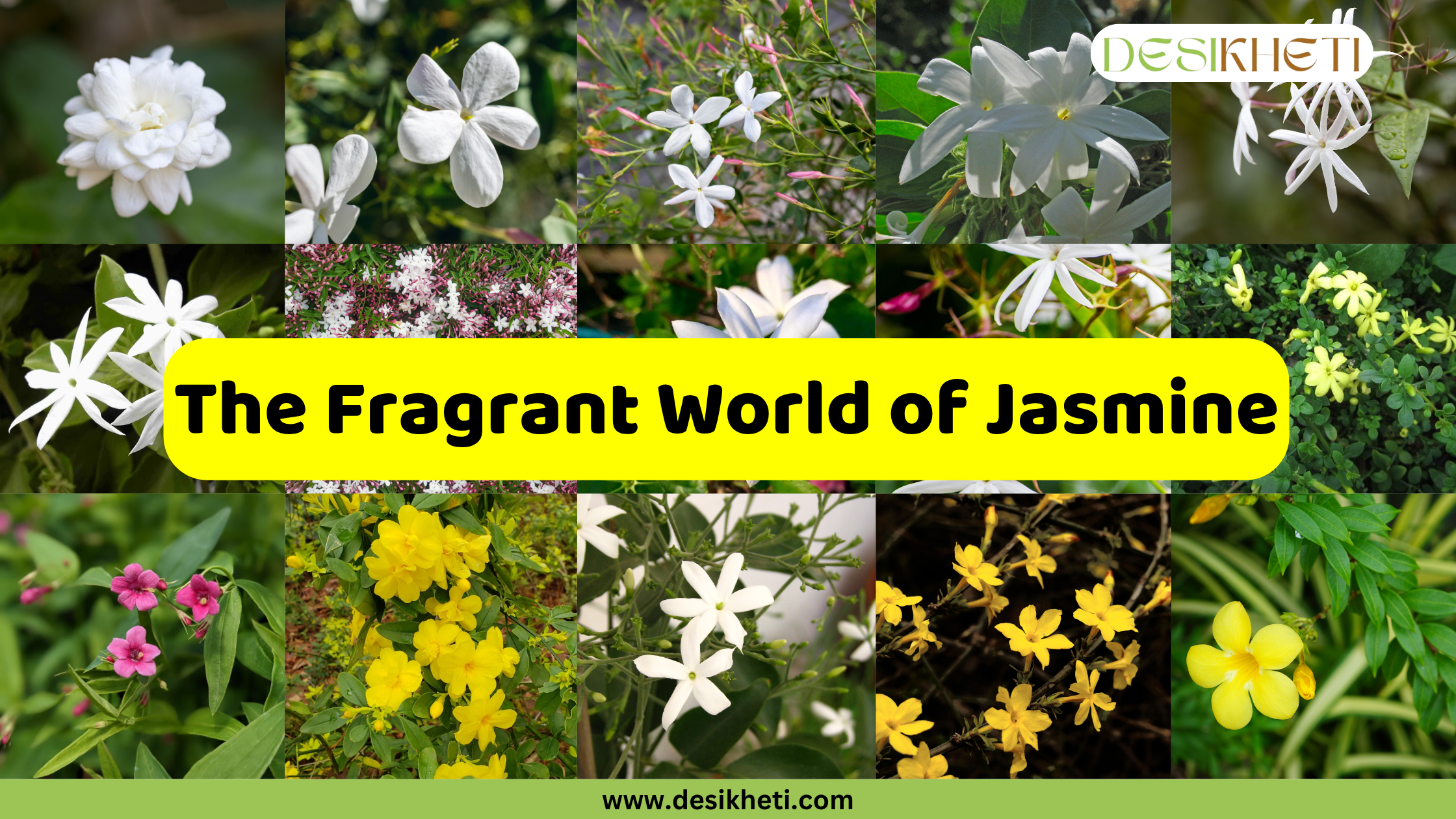Table of Contents
Introduction
Jasmine, known for its intoxicating fragrance and graceful beauty, is one of the most cherished flowering plants in India. From temple rituals to perfumery and garden aesthetics, jasmine holds cultural, spiritual, and commercial importance across the country. Whether it’s the creamy double blooms of Arabian Jasmine or the bright yellow petals of Primrose Jasmine, each variety offers something unique.
This guide explores the diverse world of jasmine grown in India, highlighting 15 beautiful and fragrant jasmine varieties along with their features and uses. Whether you’re a home gardener, a flower enthusiast, or simply someone drawn to fragrant plants, jasmine is sure to bring beauty and calm to any space.
So, without further delay, let’s dive into the blog.
Arabian Jasmine

Botanical Name: Jasminum sambac
Arabian Jasmine, also known as Mogra or the Belle of India (Sampaguita), is a highly fragrant shrub or vine with dark green leaves and double white blooms that open at night. Native to tropical Asia, it is widely cultivated across India especially in Tamil Nadu, Andhra Pradesh, and Karnataka where it holds deep religious and cultural value.
Uses and Benefits:
- Used in perfumes and attars
- Petals are used in calming herbal teas
- Commonly incorporated into religious rituals, garlands, and weddings
Royal/Spanish Jasmine
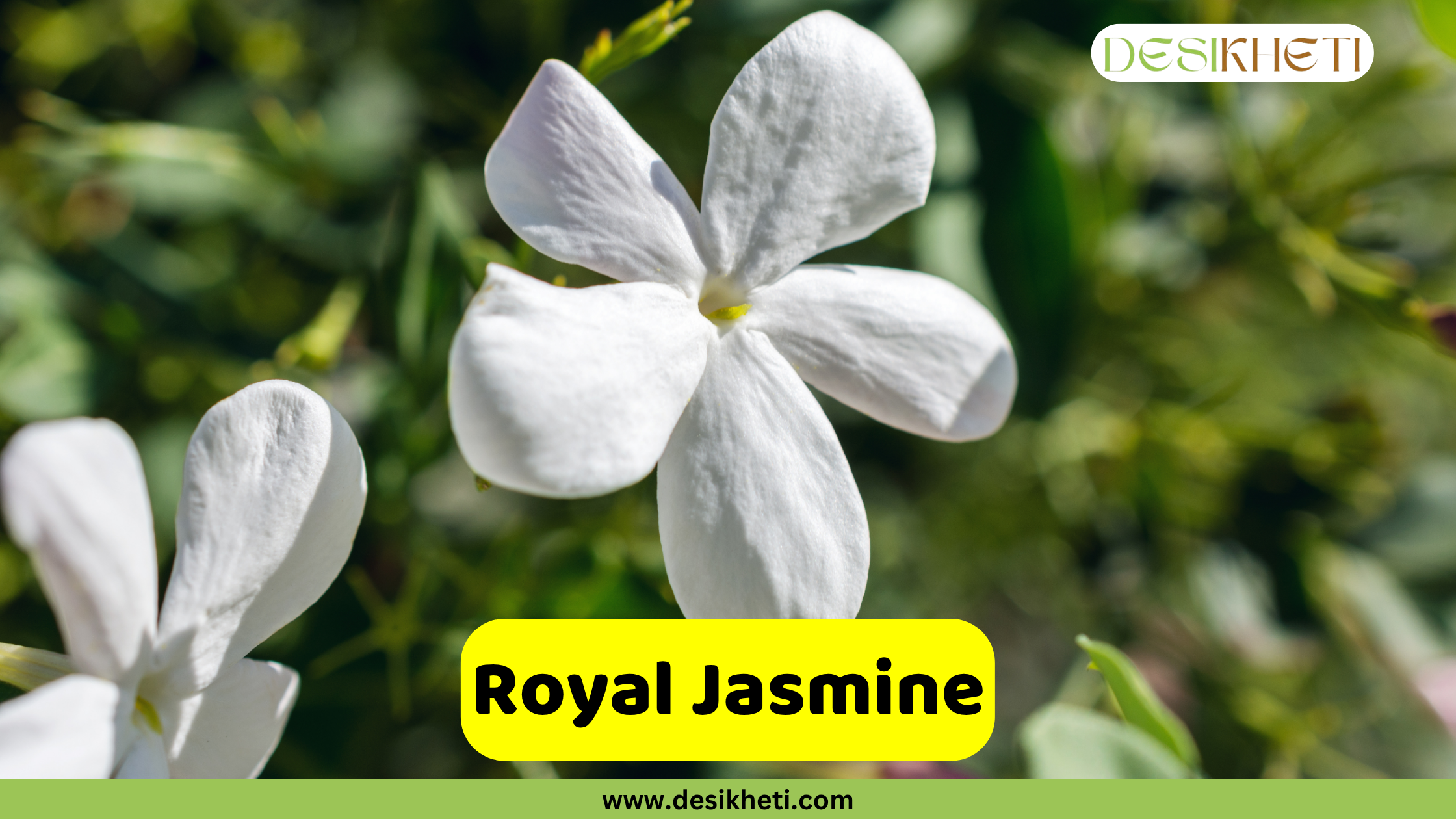
Botanical Name: Jasminum grandiflorum
Also known as Chameli, this deciduous climbing shrub features large, star-shaped white flowers with a sweet aroma. It is extensively grown in Tamil Nadu, Uttar Pradesh, West Bengal, and Karnataka and is mainly cultivated for essential oil production and export.
Uses and Benefits:
- Extracted oil is used in luxury perfumes and cosmetics
- Cultivated for traditional attars and aromatherapy
- Featured in religious ceremonies and floral décor
Common Jasmine
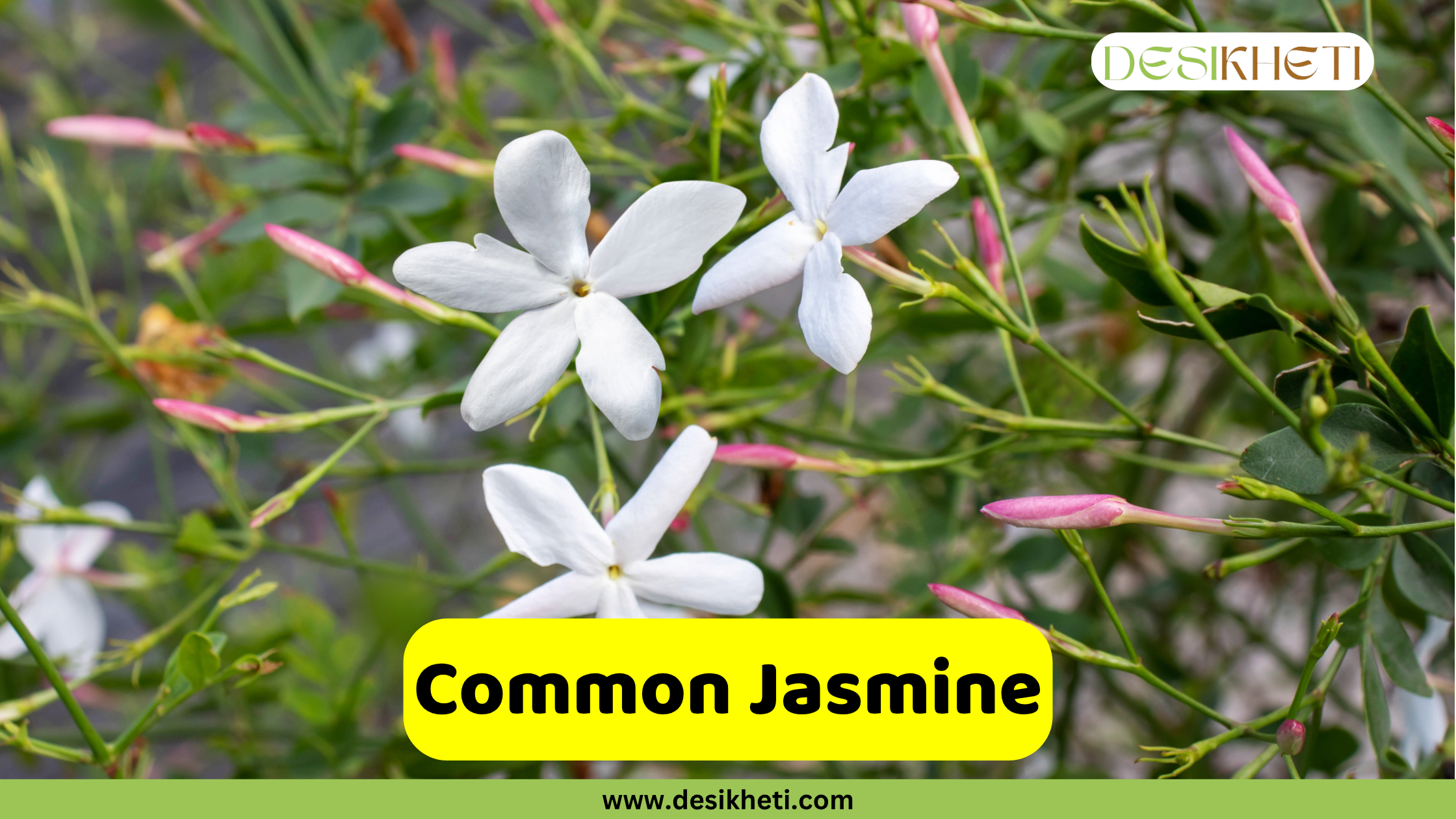
Botanical Name: Jasminum officinale
Popularly known as Poet’s Jasmine or Chameli, this vigorous climber has pinnate dark green leaves and white, star-shaped flowers with an intense evening fragrance. It is grown in Uttar Pradesh, Himachal Pradesh, and Jammu & Kashmir.
Uses and Benefits:
- Used in perfumes and scented oils
- Ideal for trellises and garden decoration
- Commonly found in temple courtyards and rituals
Downy Jasmine
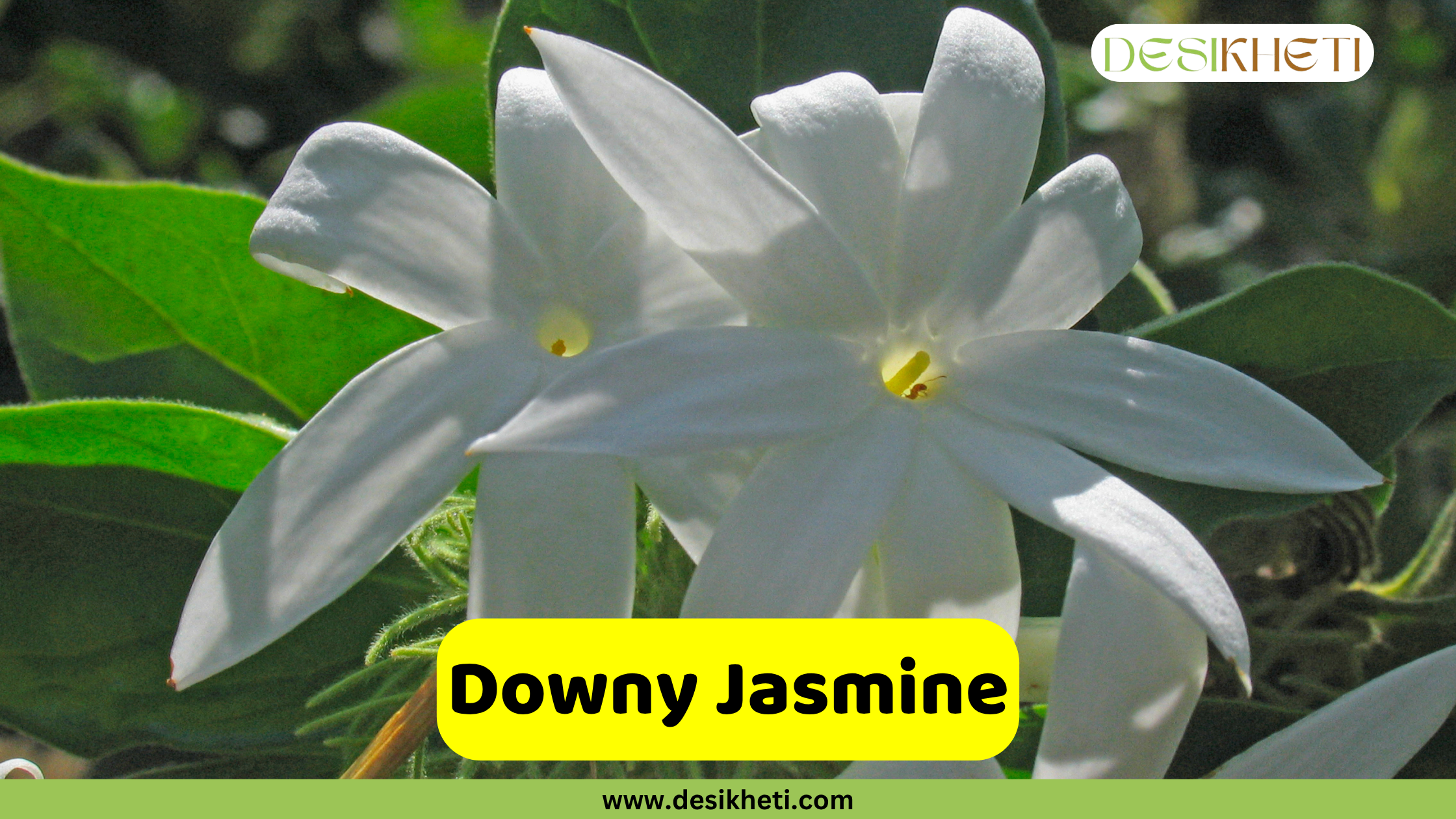
Botanical Name: Jasminum multiflorum
Also known as Kunda, Kakada, or Tundam, Downy Jasmine is a robust bushy plant with white, multi-petalled star flowers and hairy stems. It has a mild fragrance and blooms year-round. It is mostly grown in Tamil Nadu, Telangana, and Maharashtra.
Uses and Benefits:
- Used in religious offerings and home gardens
- Ideal for ornamental hedges and arche
- Low maintenance
Angel Wing Jasmine
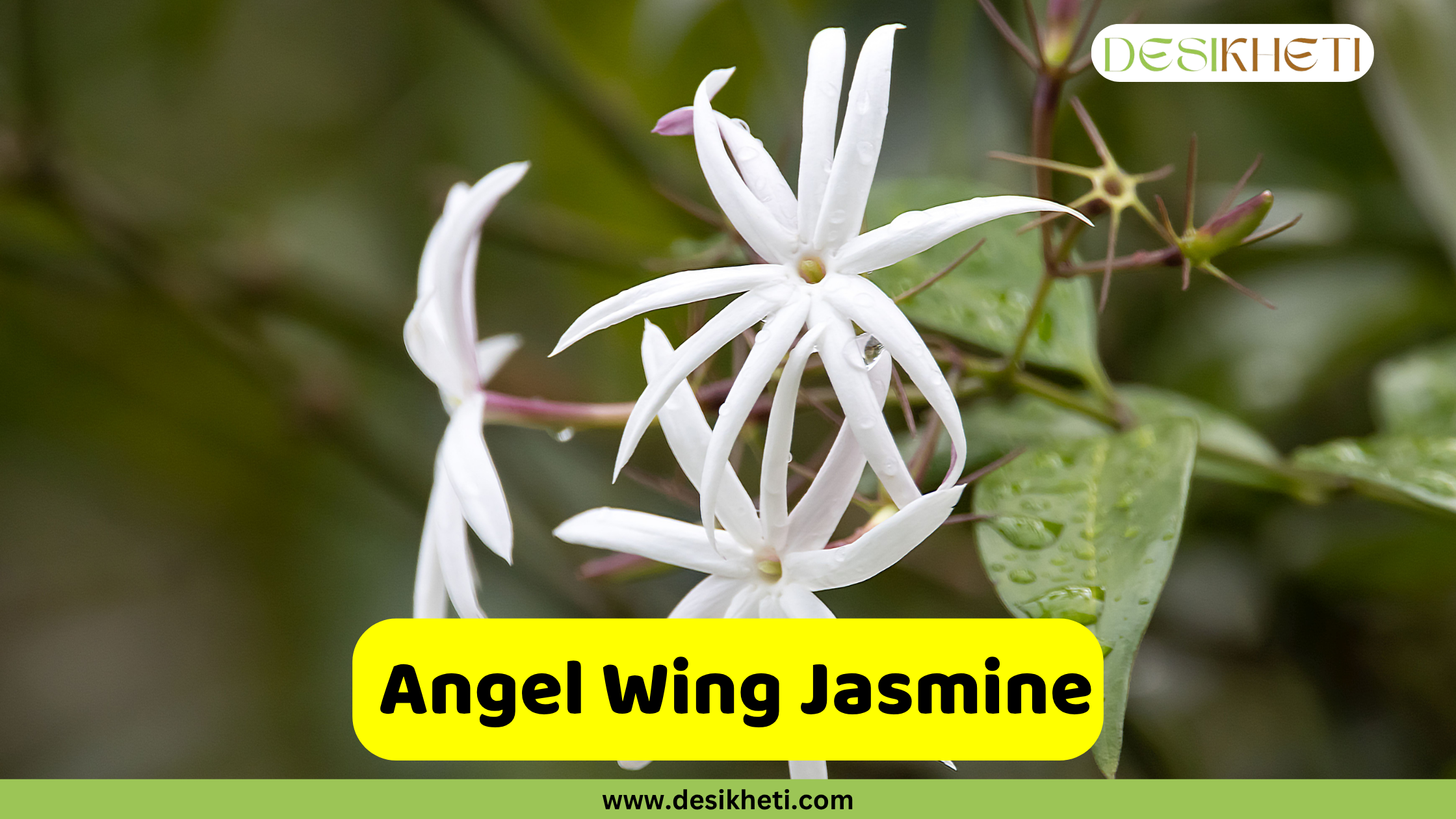
Botanical Name: Jasminum nitidum
Also known as Shining Jasmine or Star Jasmine, this ornamental climber features glossy leaves and white, wing-like flowers. The blooms are mildly fragrant and perfect for trellises. It is mainly grown in Kerala, Tamil Nadu, and Assam.
Uses and Benefits:
- Used in aromatherapy and light fragrances
- Enhances vertical garden aesthetics
- Creates a calming home atmosphere
Juhi Jasmine
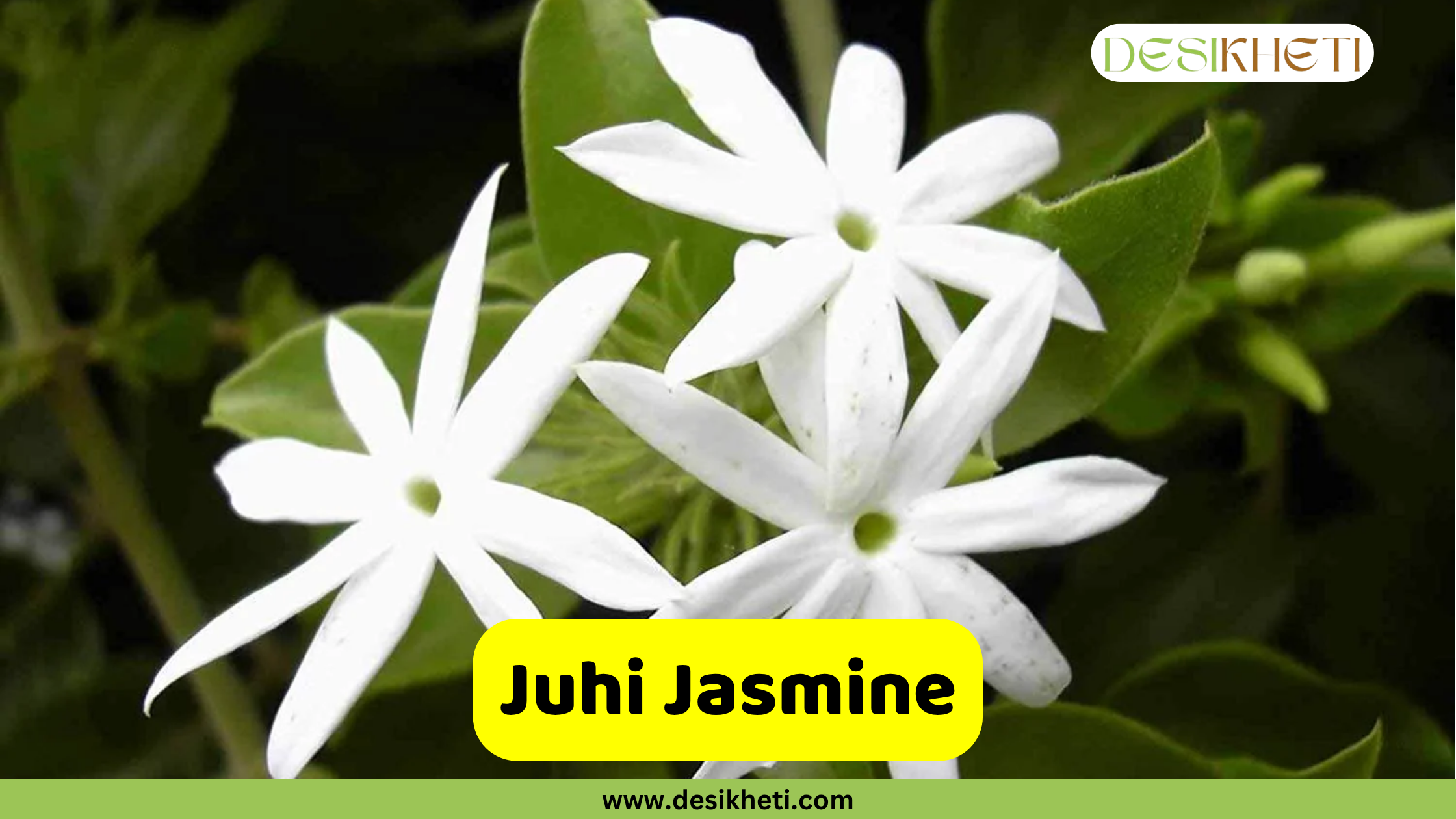
Botanical Name: Jasminum auriculatum
Juhi is a small shrub or climber that bears pure white, intensely fragrant flowers with rounded petals. It is cultivated in Tamil Nadu, West Bengal, and Central India.
Uses and Benefits:
- Widely used in natural attars and perfumes
- Commonly featured in traditional beauty practice
Pink Jasmine
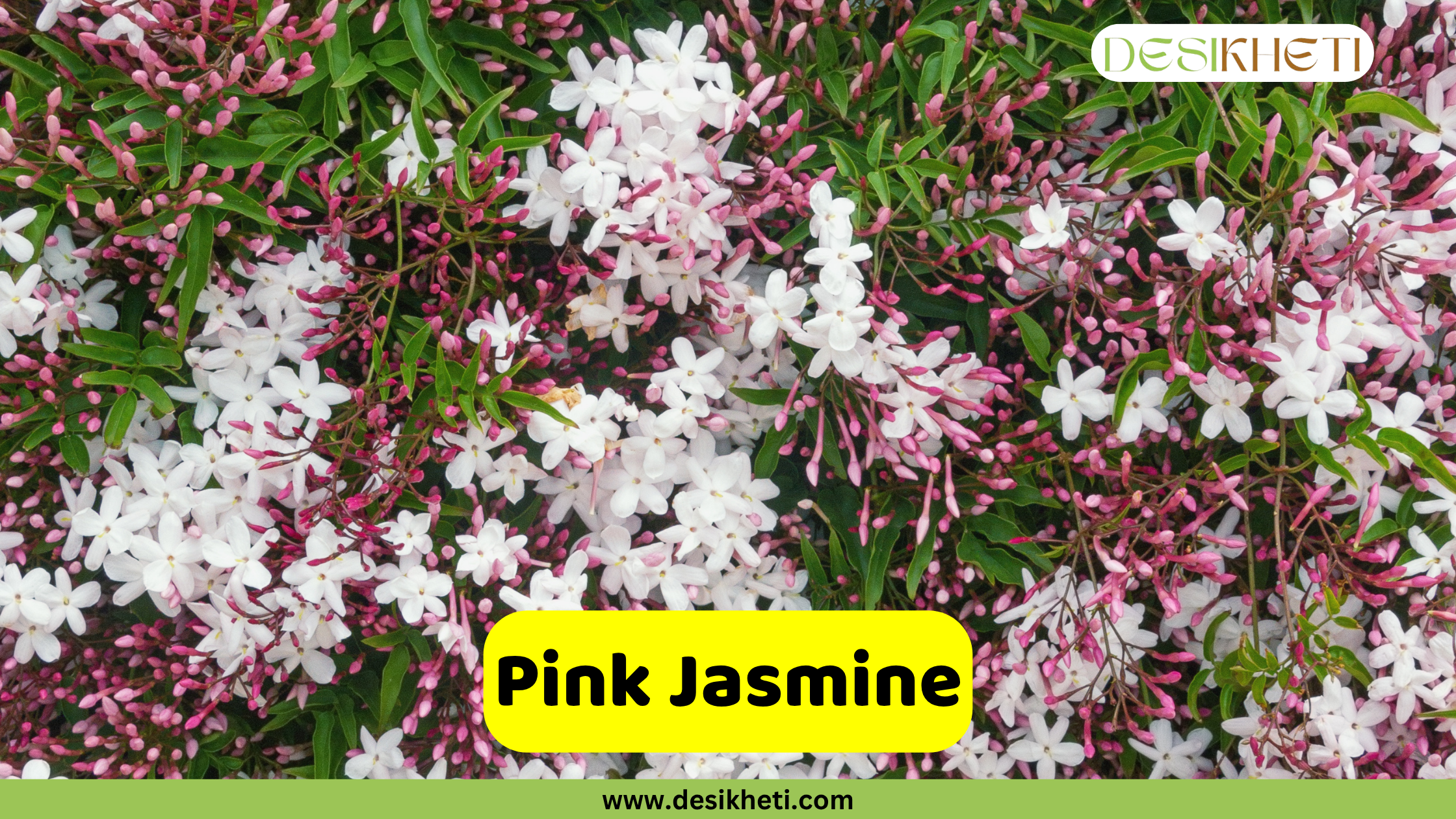
Botanical Name: Jasminum polyanthum
Native to China, this fast-growing climber has pink buds and white, star-shaped flowers that add ornamental charm and bloom profusely. It is cultivated in Tamil Nadu, Kerala, and Karnataka.
Uses and Benefits:
- Used in garlands and decorations
- Employed in aromatherapy due to its mild calming effect
- Occasionally incorporated into skincare products
Wild Jasmine
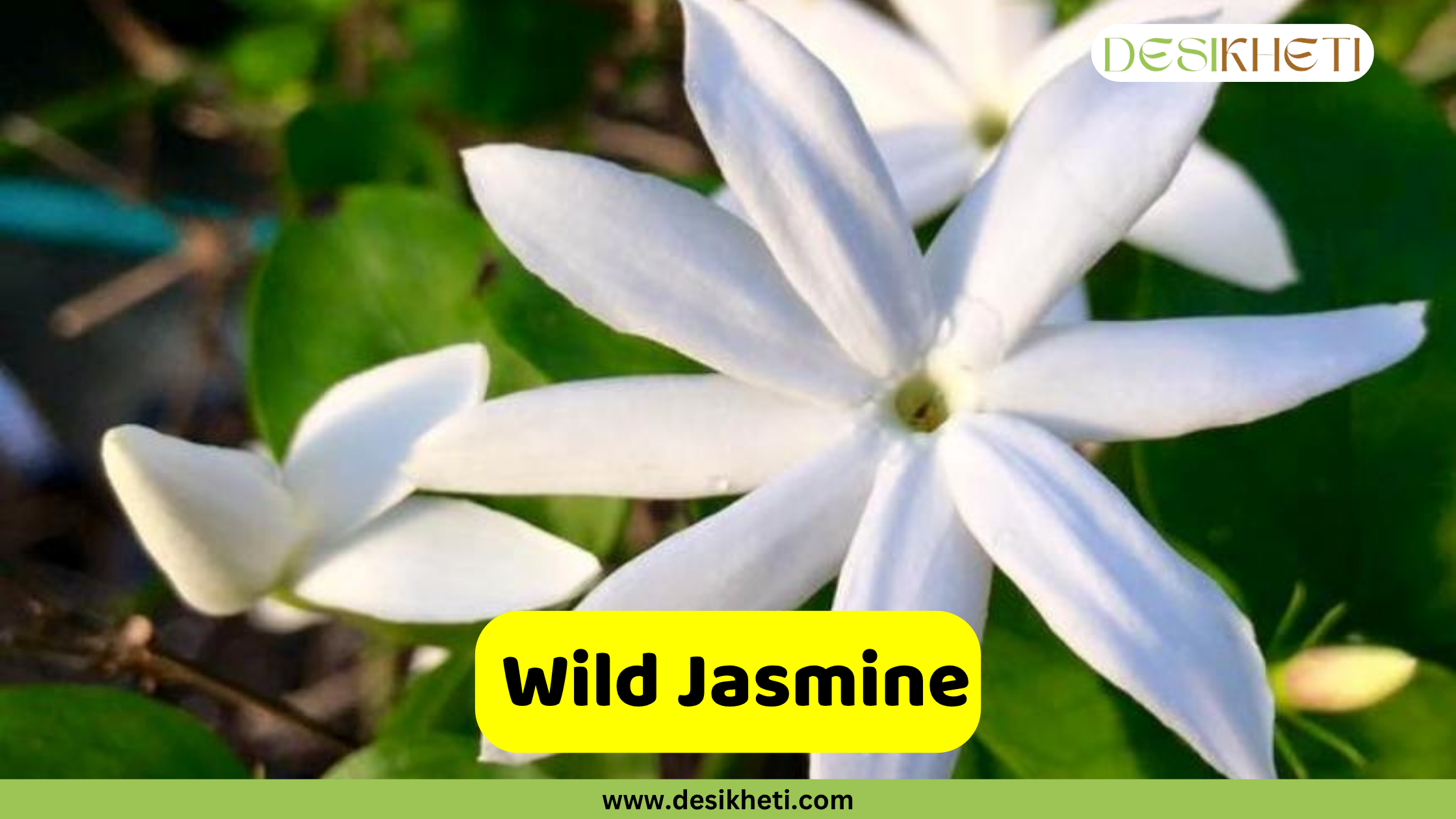
Botanical Name: Jasminum angustifolium
Also called Country Jasmine, this fast-growing creeper grows naturally in Tamil Nadu, Andhra Pradesh, and Uttarakhand. It bears small white or pale-yellow star-like flowers with narrow leaves.
Uses and Benefits:
- Used in rural garlands and temple décor
- Ideal for fences and rustic gardens
Forest Jasmine
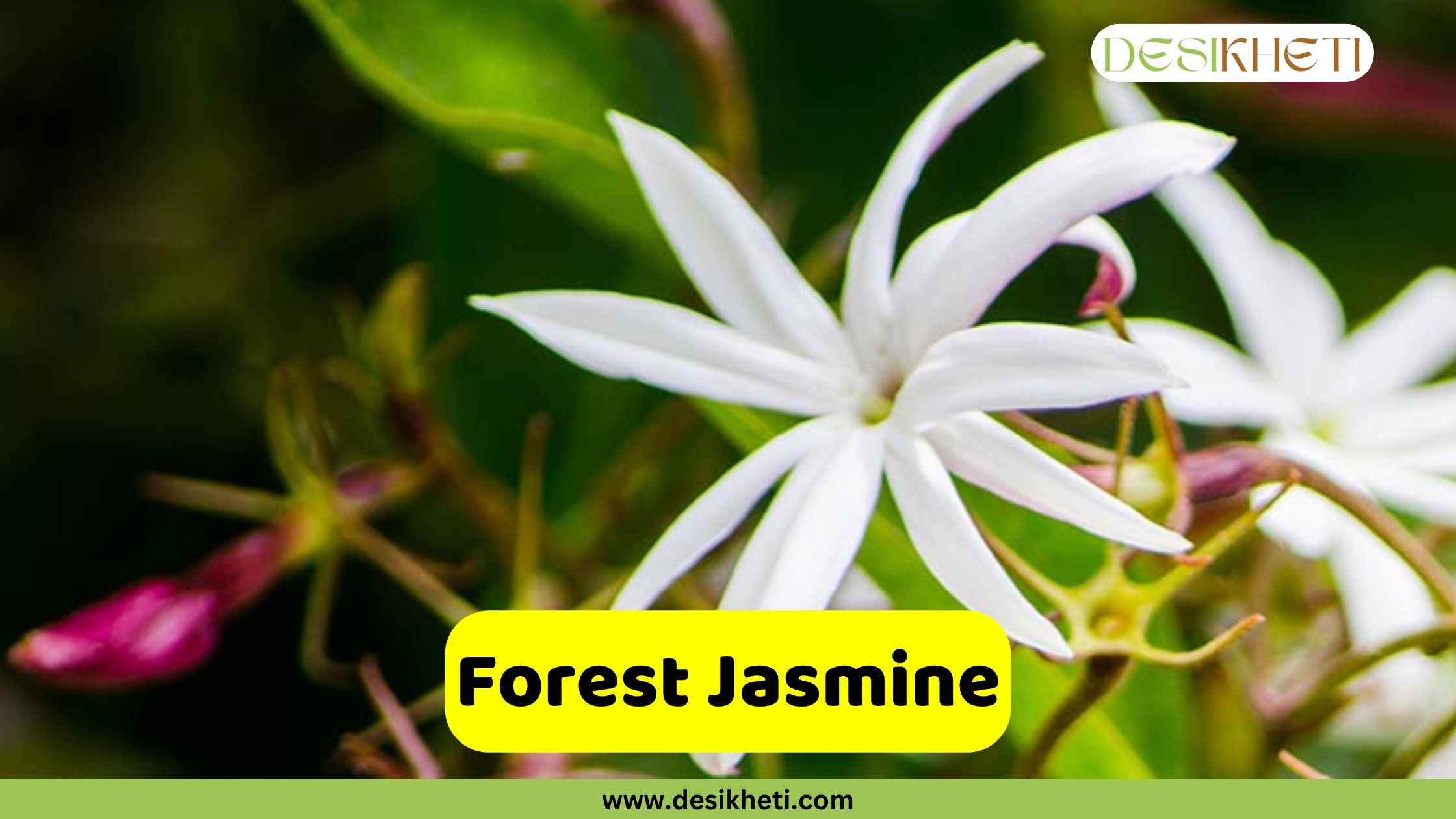
Botanical Name: Jasminum abyssinicum
An exotic climber from tropical Africa, Forest Jasmine is now mainly grown in Kerala and the Western Ghats of India. It produces large, trumpet-shaped flowers with a pink hue and has dark green foliage.
Uses and Benefits:
- Used in botanical and ornamental gardens
- Suitable for exotic landscape themes
Dwarf Jasmine
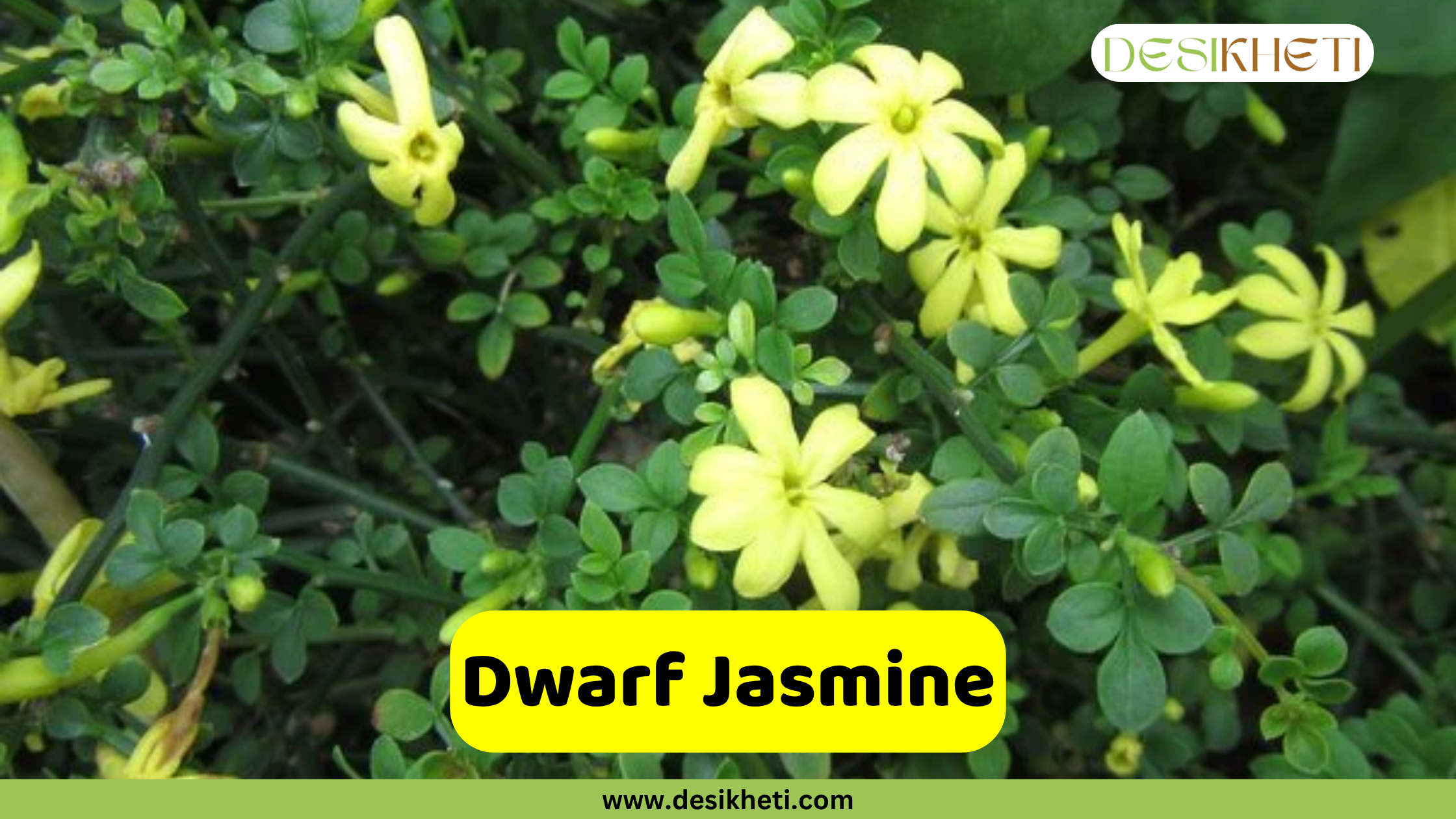
Botanical Name: Jasminum parkeri
Native to Himachal Pradesh and Uttarakhand, this compact shrub grows just 1–2 feet tall. It produces small white flowers with a strong scent, making it perfect for small gardens and pots.
Uses and Benefits:
- Ideal for container gardens
- Used in perfumes and essential oils
- Suitable for rock gardens and patios
Red Jasmine
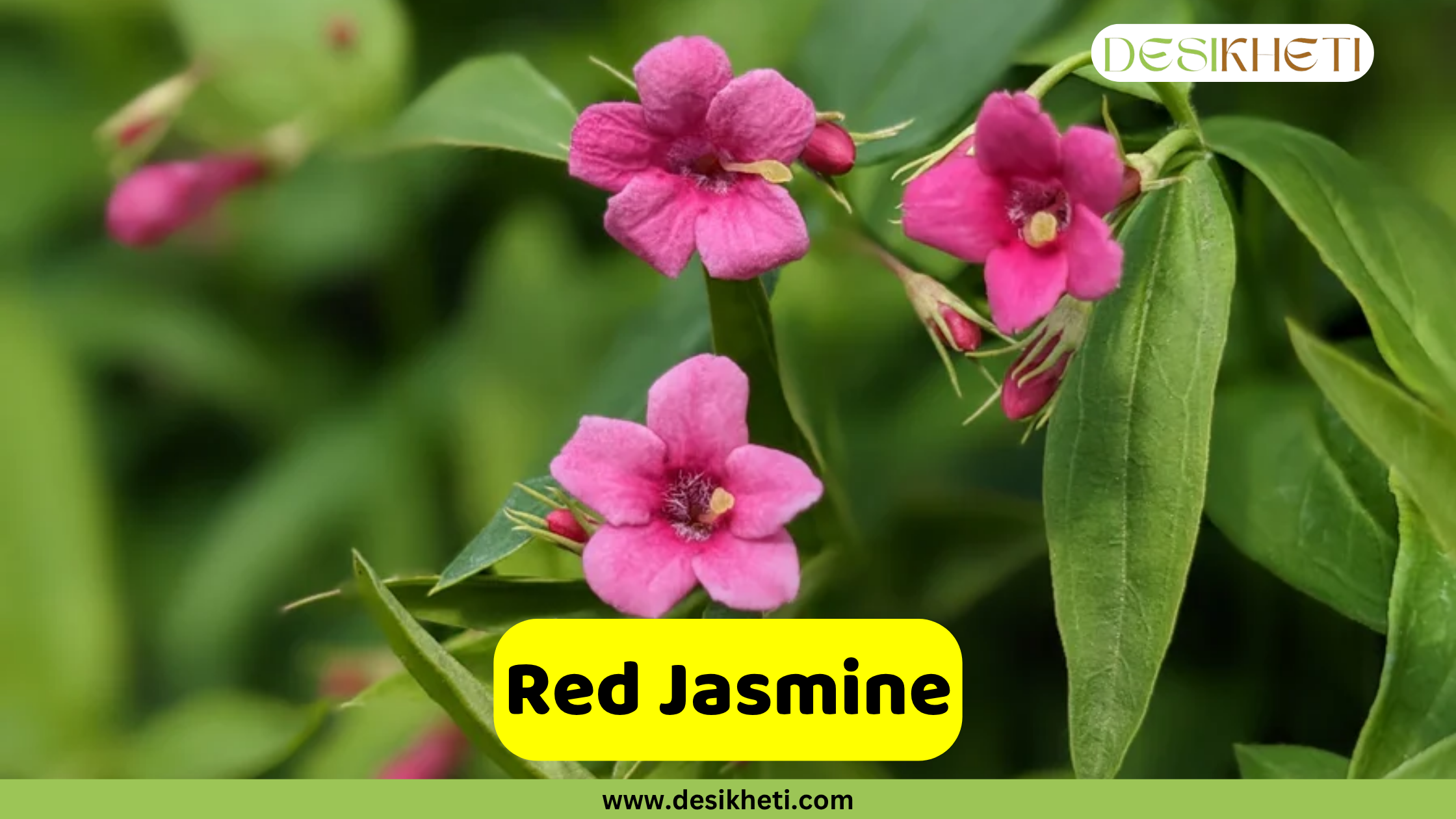
Botanical Name: Jasminum beesianum
Also known as Red or Pink Jasmine, this semi-evergreen climber exhibits reddish-pink tubular flowers and dark green foliage. Native to China and Tibet, it is cultivated in select ornamental gardens in temperate climates.
Uses and Benefits:
- Used in ornamental trellises and garden arches
- Attracts pollinators such as bees and butterflies
- Valued for its rare flower color among jasmines
Primrose Jasmine
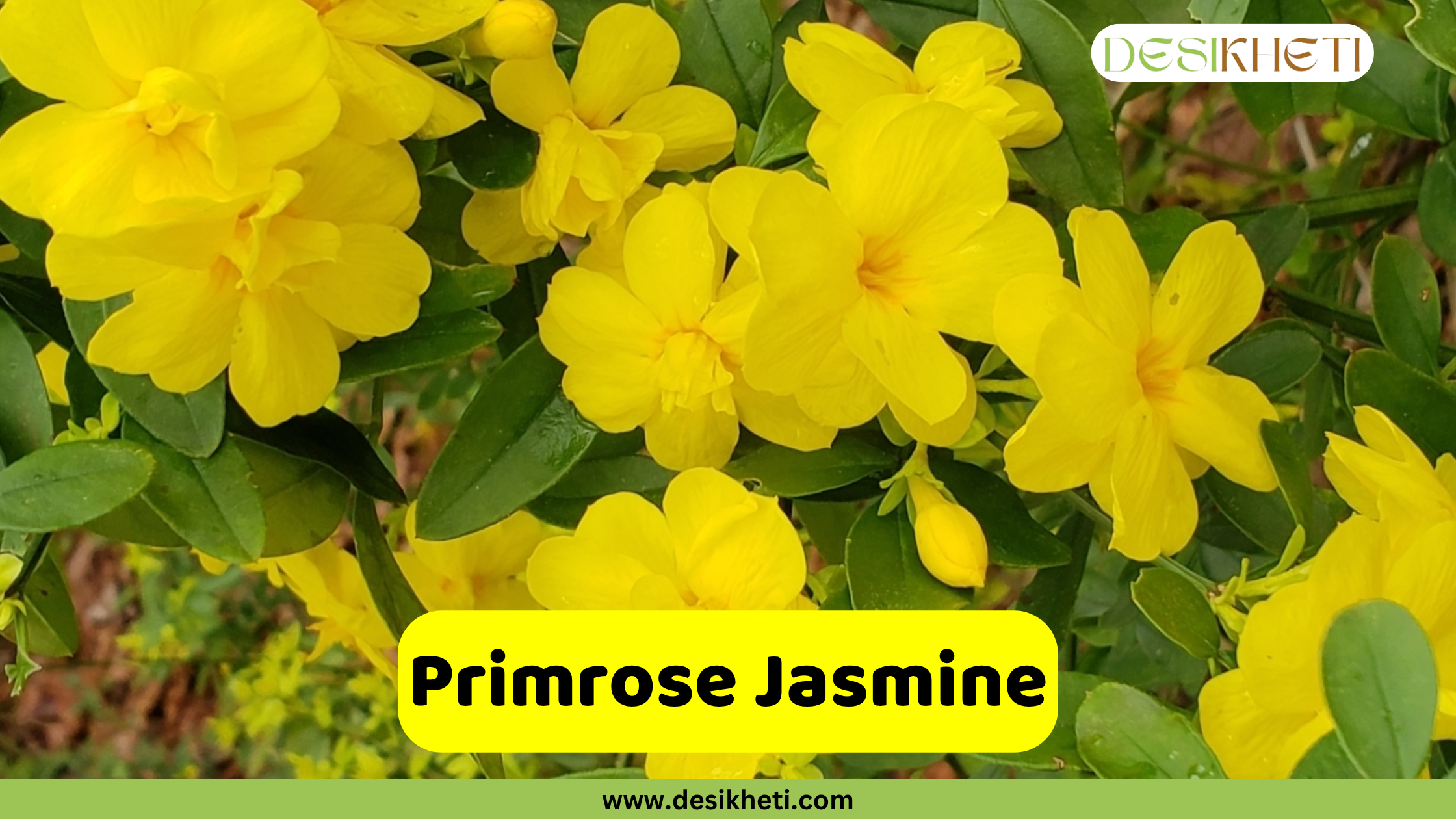
Botanical Name: Jasminum mesnyi
Also called Yellow or Japanese Jasmine, this semi-double yellow-blooming shrub brightens gardens in late winter. It is cultivated mostly in Himachal Pradesh and Northeast India.
Uses and Benefits:
- Adds color to winter gardens
- Commonly used in public parks and borders
- Noted more for decorative appeal than fragrance
Lemon-Scented Jasmine
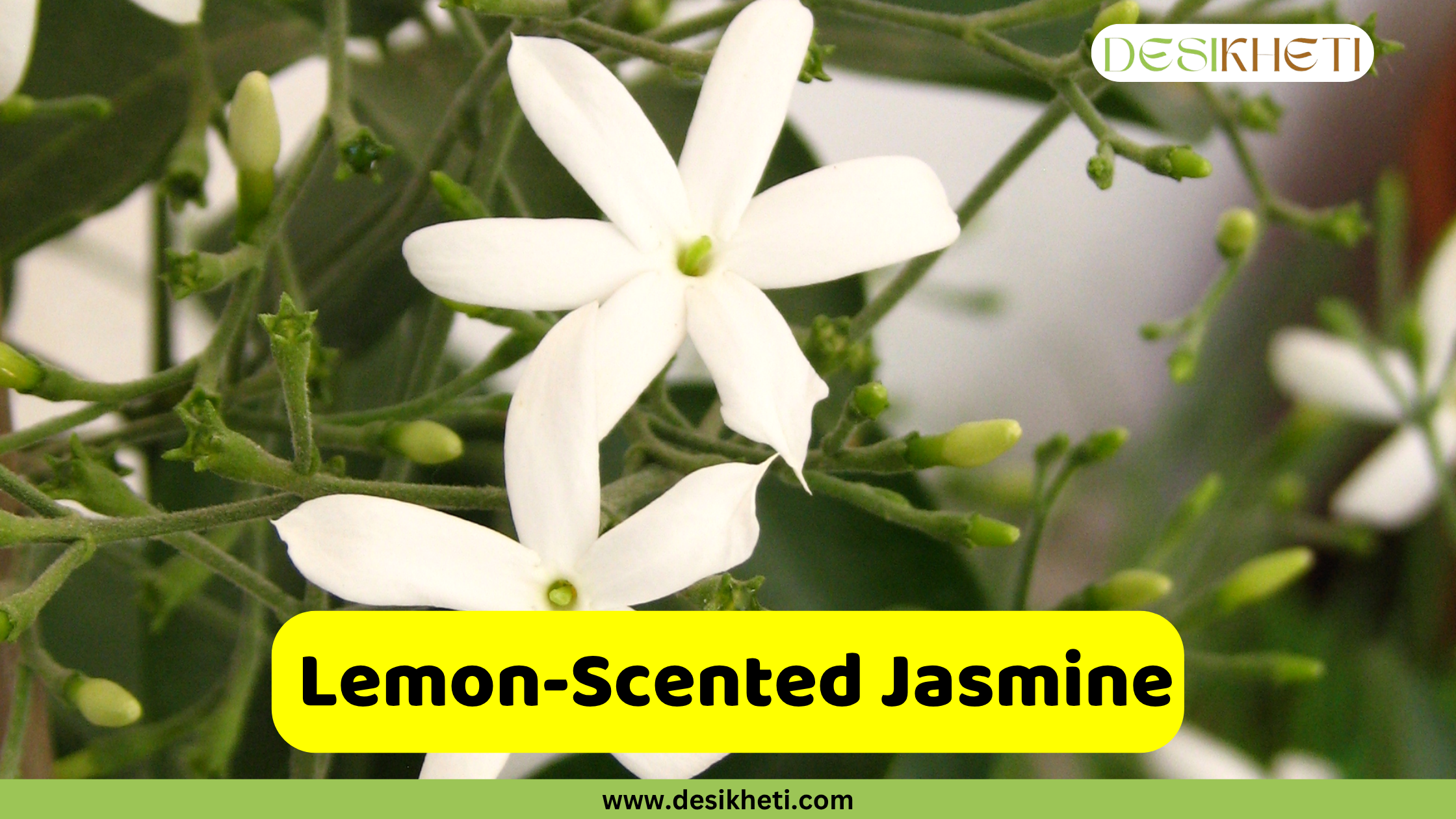
Botanical Name: Jasminum azoricum
Emitting a refreshing lemon-like scent, this jasmine features trifoliate leaves and clusters of white blooms. It is grown in states such as Kerala and Goa.
Uses and Benefits:
- Ideal for balcony gardening and decorative pots
- Provides a refreshing alternative to sweet-scented varieties
Winter Jasmine
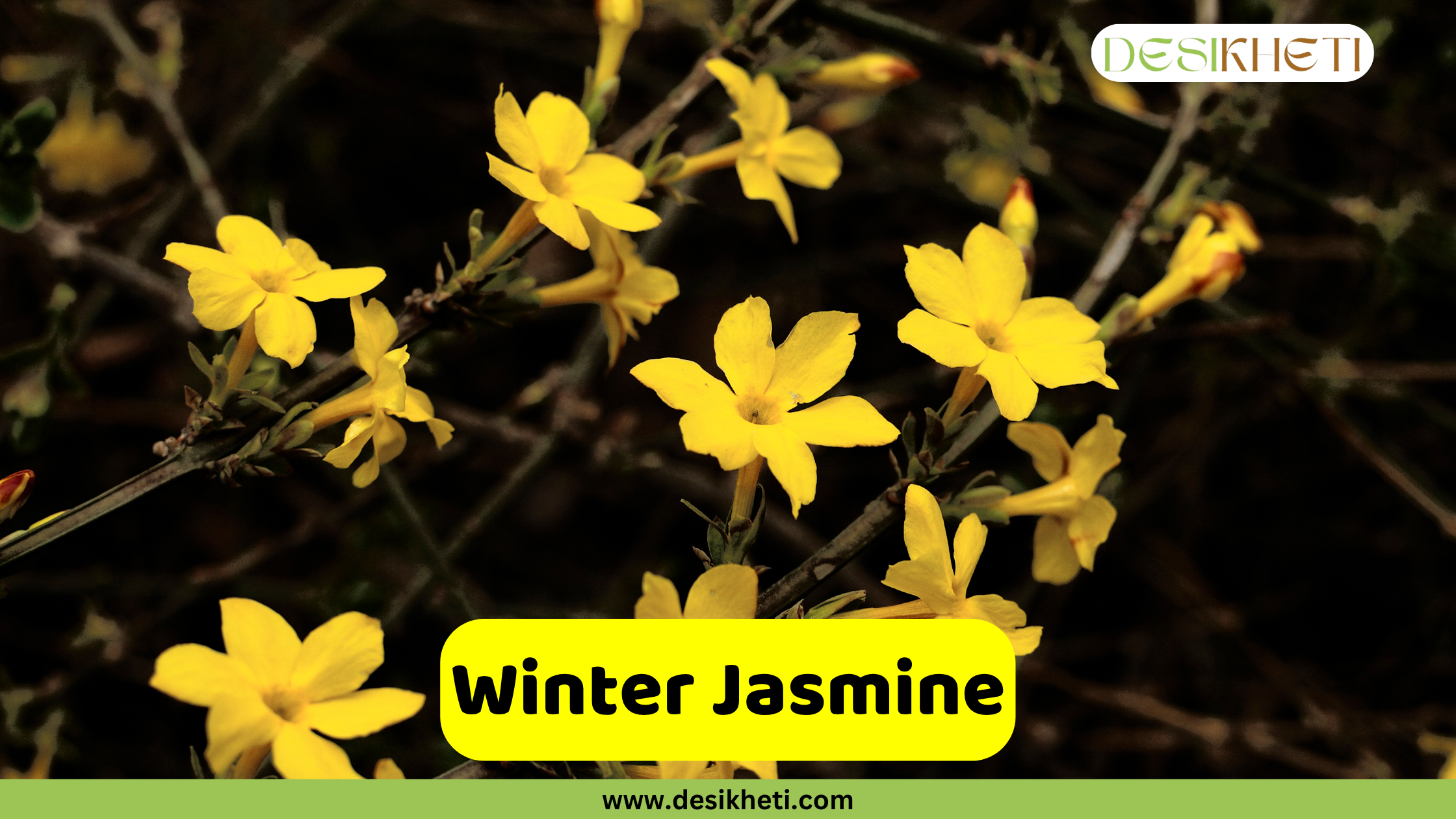
Botanical Name: Jasminum nudiflorum
Native to China, Winter Jasmine is a yellow-flowering shrub that blooms from December to February. It has bare green stems and is often used in cascading walls. It is mostly grown in states such as Himachal Pradesh and Sikkim.
Uses and Benefits:
- Used in sloped gardens and retaining walls
- Brightens winter landscapes
- Offers a strong visual appeal despite low fragrance
Italian Jasmine
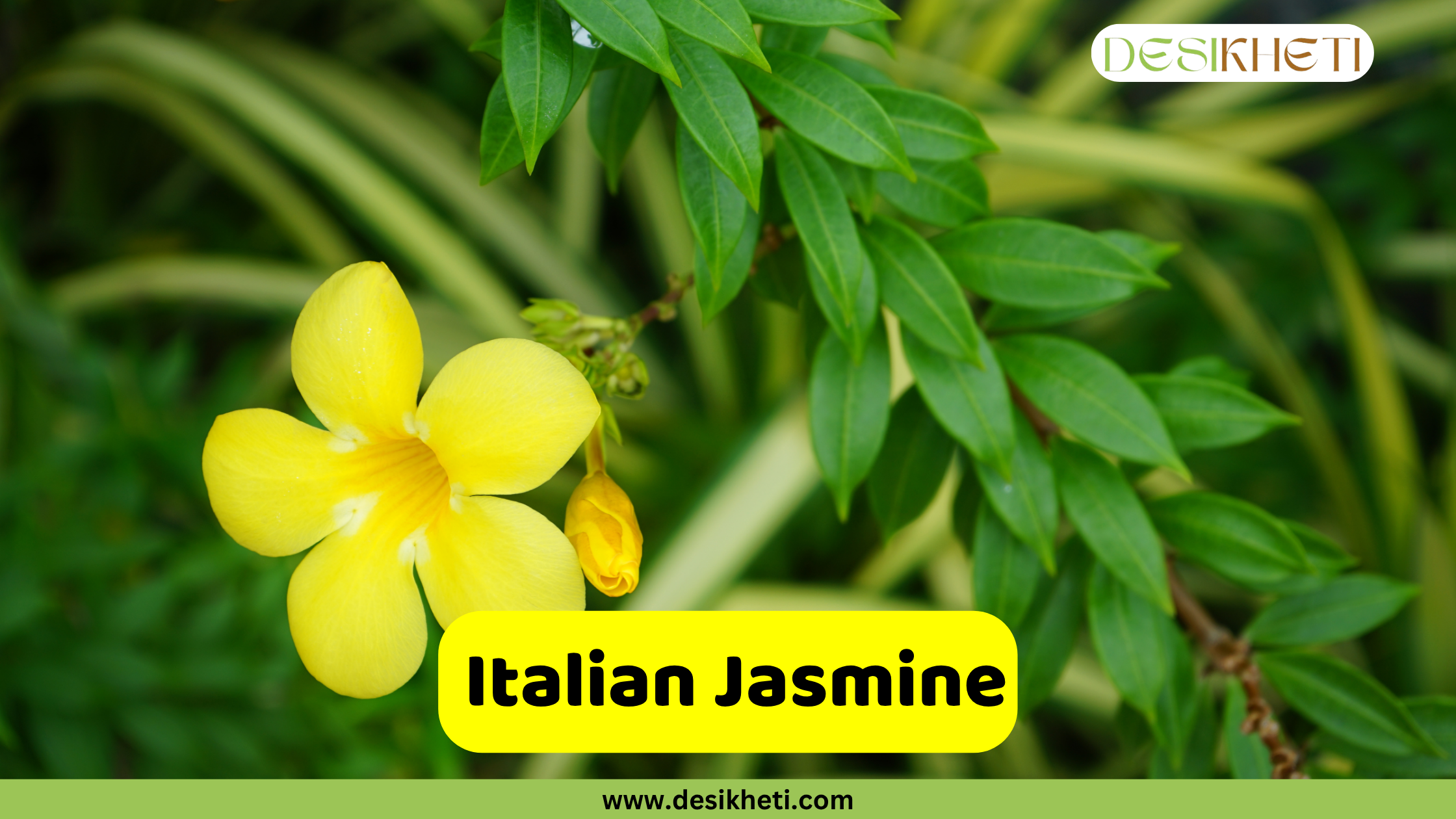
Botanical Name: Jasminum humile
Also known as Himalayan Jasmine, this bushy shrub produces clusters of golden-yellow flowers in spring and has a light, sweet fragrance. It is grown in hill stations such as Uttarakhand and Jammu & Kashmir.
Uses and Benefits:
- Ideal for hedges, pots, and home gardens
- Easy to maintain in temperate zones
- Provides seasonal color and visual freshness
Growing & Care Tips for Jasmine Plants
- Sunlight: Most jasmine varieties thrive in full to partial sunlight. At least 4–6 hours of direct sun encourages strong flowering.
- Watering: Keep the soil consistently moist but not soggy. Water more frequently during summer and reduce watering during the dormant season.
- Soil: Use well-drained, fertile soil rich in organic matter. A slightly acidic to neutral pH (6.0–7.0) is ideal.
- Pruning: Regularly prune dead branches and faded flowers to encourage new growth and maintain the plant’s shape.
- Fertilizing: Apply a balanced liquid fertilizer once a month during the growing season (spring and summer). Avoid over-fertilization, as it can reduce flowering.
- Container Growing: Many varieties (like Dwarf Jasmine or Arabian Jasmine) grow well in pots. Ensure good drainage and place containers in sunny spots.
- Pests: Watch out for aphids, mealybugs, and spider mites. Neem oil or mild insecticidal soap can help manage infestations effectively.
- Climate: Jasmine grows best in warm, humid climates. Some species tolerate light frost (e.g., Italian Jasmine), while others prefer tropical conditions.
Jasmine is more than just a flower; it is a symbol of purity, devotion, and joy across Indian traditions. With numerous species suited to different climates and purposes, from perfumery to prayer rituals, jasmine remains a timeless favorite in both gardens and homes.
By choosing the right variety for your region and following simple care practices, you can enjoy lush foliage, delicate blooms, and an enchanting fragrance nearly year-round.
Do let us know in the comments which is your favourite jasmine variety.
FAQs on Jasmine
1. What are the interesting facts about Arabian jasmine?
A. Arabian jasmine is known for its sweet fragrance and is used in perfumes and religious offerings. It’s the national flower of the Philippines.
2. What is Spanish jasmine used for?
A. Spanish jasmine is used in making perfumes and essential oils due to its strong fragrance. It is also grown ornamentally.
3. What are the disadvantages of jasmine plants?
A. Jasmine may be invasive, attract pests like aphids, and some people may be allergic to its strong fragrance.
4. How do you care for downy jasmine plants?
A. Downy jasmine thrives in full sun to partial shade, with moderate watering and occasional pruning.
5. Does downy jasmine smell?
A. Downy jasmine has a mild fragrance compared to other jasmine species.
6. How big do angel wing jasmine get?
A. Angel wing jasmine can grow up to 10 feet in height when supported by a trellis or wall.
7. How do you care for an angel wing jasmine plant?
A. Provide it with full sun, well-drained soil, and regular pruning to control its size.
8. What is the scientific name for Angelwing jasmine?
A. The scientific name for Angelwing jasmine is Jasminum nitidum.
9. Are jasmine and Juhi the same?
A. Juhi is a type of jasmine, specifically Jasminum auriculatum, known for its strong scent.
10. Is Juhi a climber?
A. Juhi is a semi-climbing shrub that benefits from support to grow upright.
11. Where is the best place to plant pink jasmine?
A. Plant it in a sunny, sheltered spot with well-drained soil and room to climb.
12. What are the characteristics of wild jasmine?
A. Wild jasmine typically has smaller flowers and is less fragrant but hardy and adaptable.
13. What conditions are good for jasmine?
A. Warm, sunny climates with well-drained soil and regular watering are ideal for jasmine.
14. How big does a dwarf jasmine get?
A. Dwarf jasmine may grow to about 1 to 2 feet tall.
15. Is dwarf jasmine fragrant?
A. Yes, dwarf jasmine has a light, pleasant fragrance.
16. How do you take care of a small jasmine plant?
A. Water regularly, provide sunlight, and trim to maintain shape and encourage growth.
17. How big do primrose jasmine get?
A. Primrose jasmine can grow up to 10 feet tall and wide with sprawling stems.
18. How does winter jasmine pollinate?
A. It is primarily pollinated by insects like bees during its flowering period.
19. Which is the strongest scented jasmine?
A. Arabian jasmine and Jasminum grandiflorum are a few strongly scented varieties.
20. What does Italian jasmine smell like?
A. Italian jasmine has a sweet, light fragrance.
